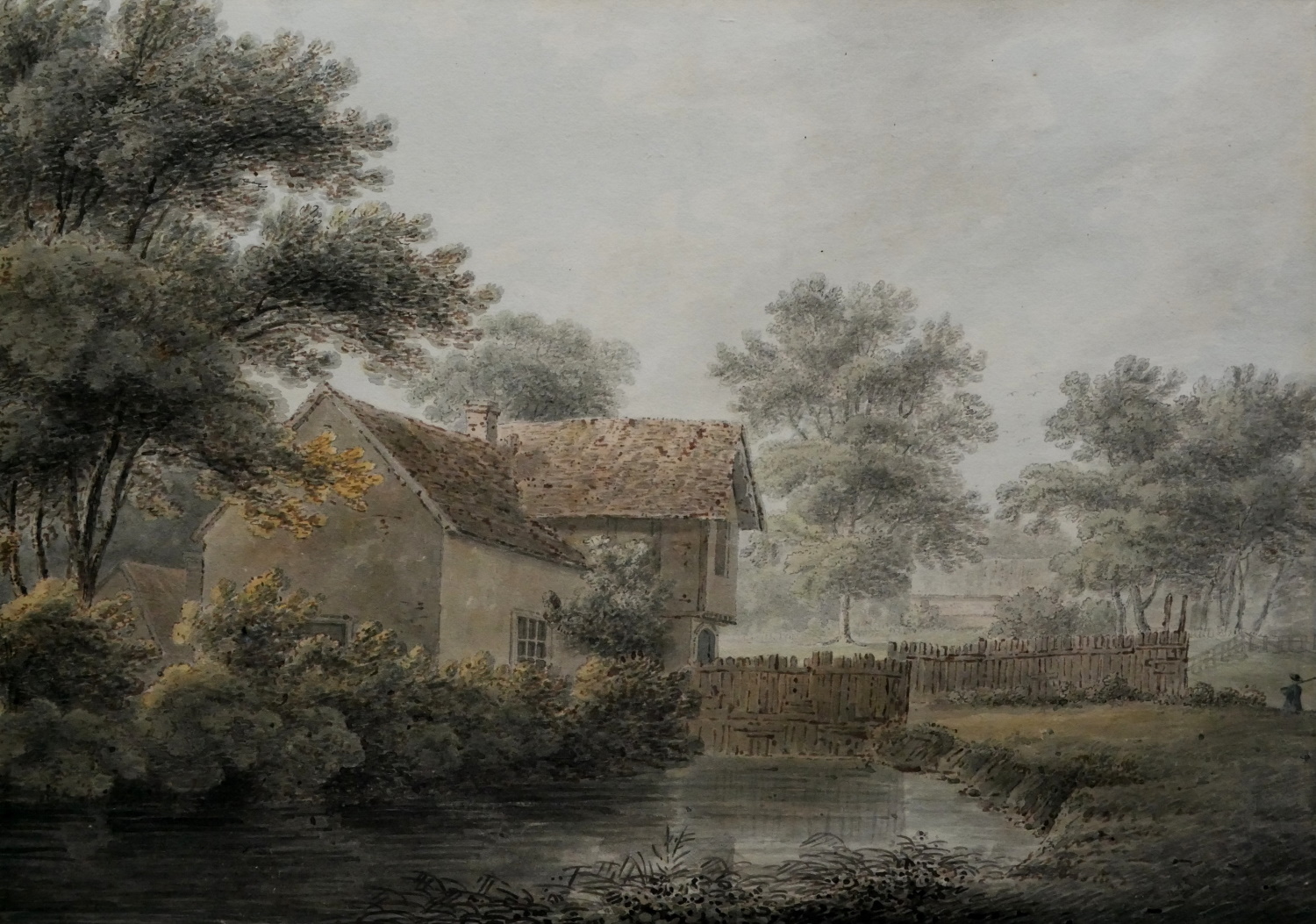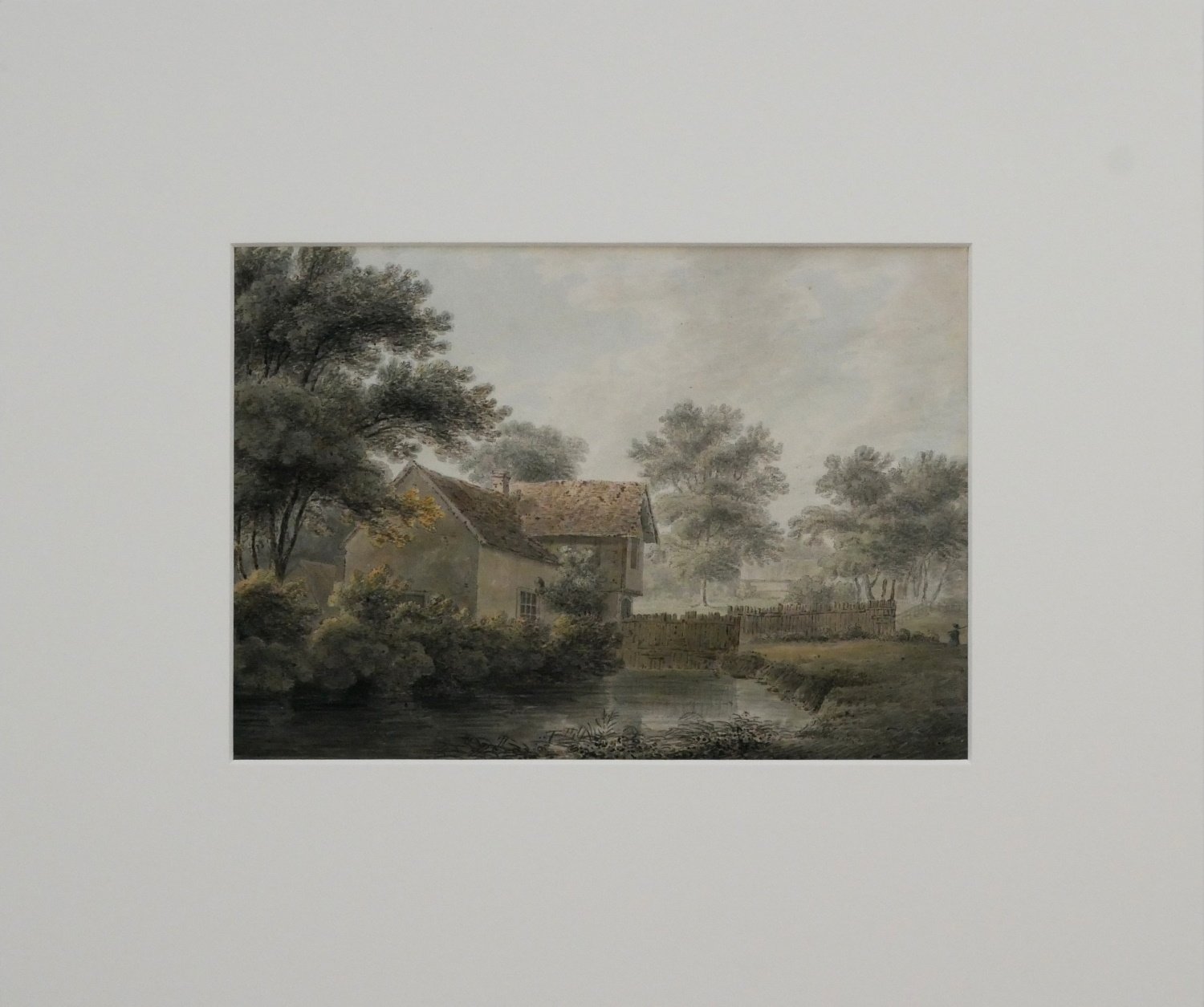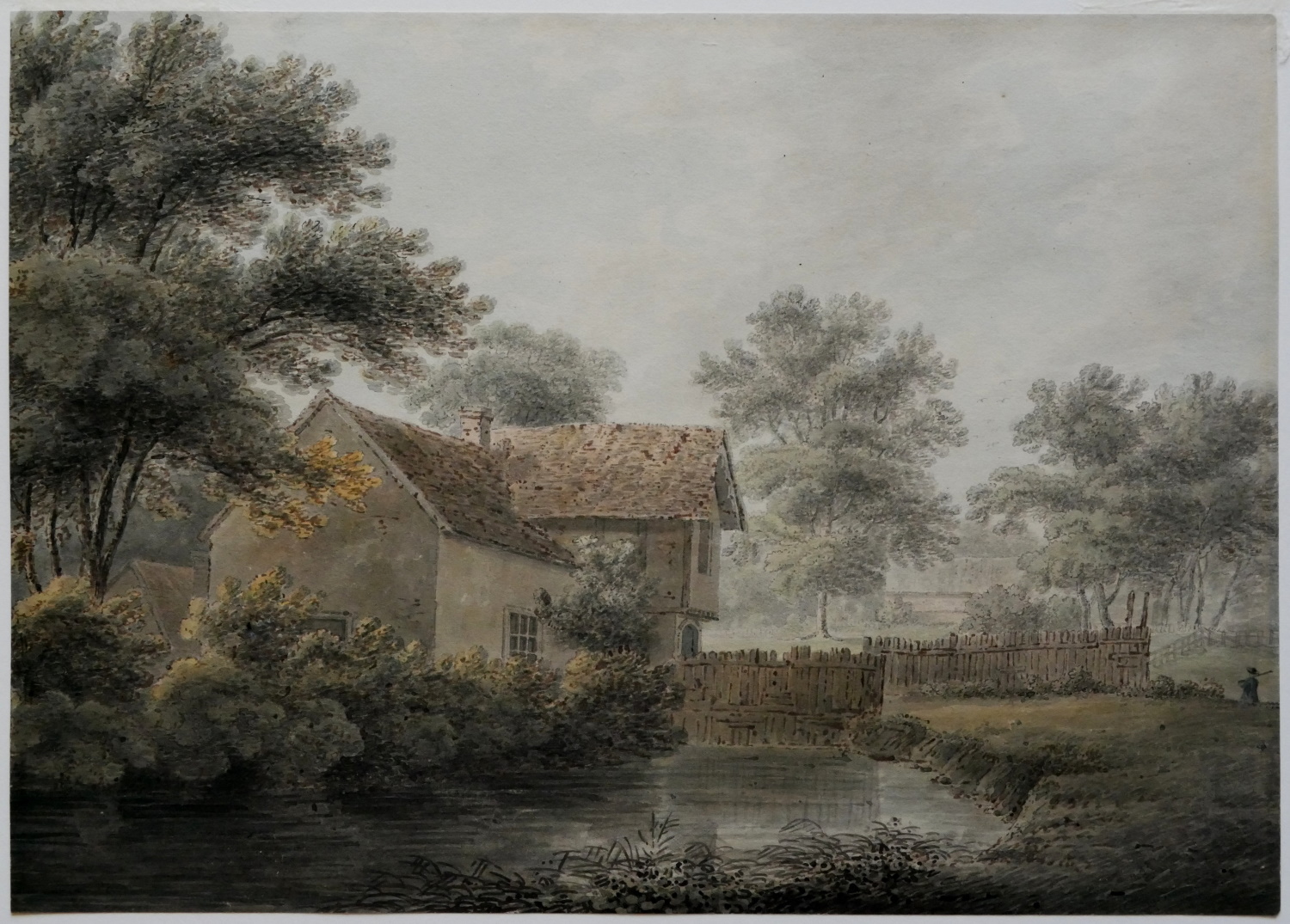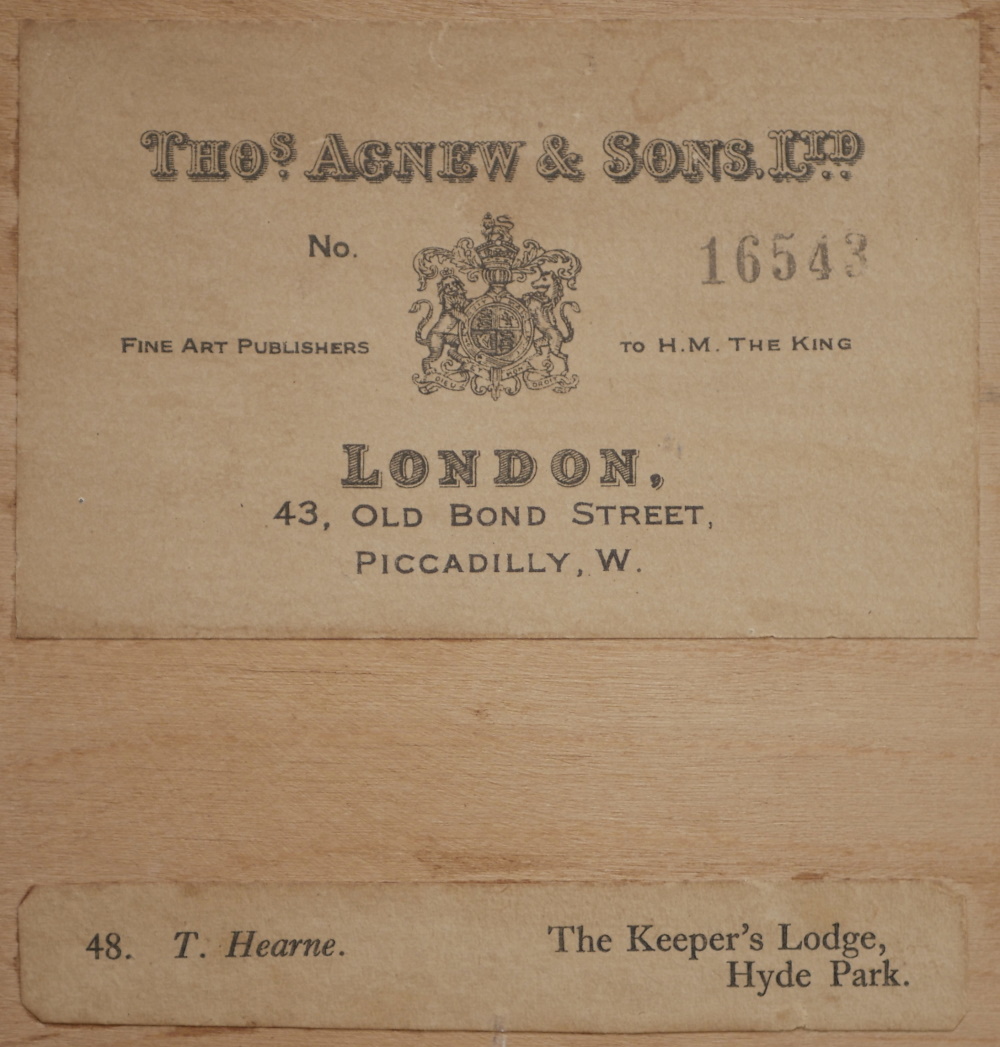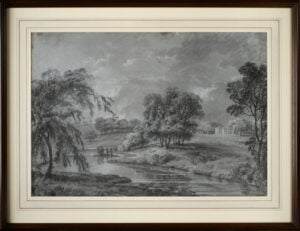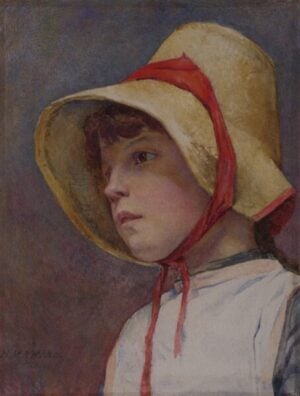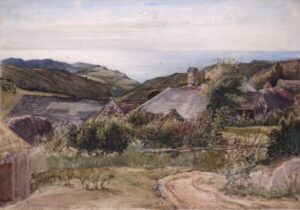Description
The Lodge stood on the north side of the Serpentine next to the Ring (a circular track around which the nobility could drive their carriages). It was known as the Cheesecake House (among other names) where refreshments could be purchased.
Thomas Hearne made several watercolours and drawings of the Cheesecake House which had become a favourite subject for landscape painters in the 1790s: Including Paul Sandby, Michael Angelo Rooker and Dominic Serres. Another example of the same subject by Hearne is in the Paul Mellon collection, Yale Center for British Art, and is dated c.1795. In their watercolour the bridge is constructed in a more conventional manner as opposed to the fenced version depicted in our watercolour, because of this it may be that our watercolour is earlier than the Mellon example.
The Cheesecake House was an ancient building, about half an hour’s walk from Westminster or Charing Cross, made of timber and plaster with a flat tiled roof, it stood in the park from at least the reign of Charles II (and perhaps even earlier). To gain access to the front door, the visitor had to cross the small stream which ran in front of the building via a rudimentary wooden bridge. Samuel Pepys was a visitor; in 1669 he took his wife for a visit, and they sat in their coach and ate ‘a cheesecake and drank a tankard of milk’.
In the time of Queen Anne, it was known as the Cake House or Minced-pie House and later was called Price’s Lodge (later sources say after Gervase Price, chief under-keeper of Hyde Park). By the late seventeenth-century Price’s Lodge was run by a widow named Frances Price.
St. James’s Park is frequented by people of quality; who, if they have a mind to have better and freer air, drive to Hyde Park, where is a ring for the coaches to drive around; and hard by is Mr’s Price’s where are incomparable syllabubs.
A Journey to London in the year 1698 by Dr William King (1663-1712)
But it is best remembered as the Cheesecake House, after one of the delicacies which could be bought there as cheesecakes, custards, tarts, and syllabubs were all on the menu.
Mrs Price was still the landlady in 1712 when a famous duel was fought literally on her doorstep in Hyde Park between James Hamilton, 4th Duke of Hamilton and Charles Mohun, 4th Baron Mohun on 12th November 1712.
Lord Mohun’s coach was stopped by the keeper of Hyde Park but, telling him they were headed for Price’s Lodge, he allowed it to pass. Mohun and his second, an Irish officer named George Macartney, got out of the coach, and walked away, bidding the coachman to go into the lodge and ask John Reynolds, the Drawer, to get some ‘burnt-wine’ ready for when they returned. Reynolds was wise to their tricks. He said he would not do so, ‘for very few came thither so soon in the morning but to fight…’.
The duel was fought with swords and the seconds joined in too; both Hamilton and Mohun were wounded, Mohun fatally but the Duke of Hamilton only received a cut on his arm, at least at that point. Accounts differ, but it was claimed that the duke then dropped his sword and Macartney, Mohun’s second, delivered a fatal blow to him. John Reynolds came out and tried to help the duke walk to the house but before they reached the bridge, Hamilton said, ‘he could walk no further’ and died on the spot.
With both the main protagonists dead, the two seconds, Macartney and the duke’s man, Colonel Hamilton were charged with manslaughter; Macartney fled to Hanover, but Hamilton stood trial and was found guilty.
Frances Price died around 1719 and her will, written seven years earlier, left Price’s Lodge to her grandson, John Price. However, Frances’ would stipulate that, if she wanted to take over the management, her widowed daughter, Anne Silver, who lived with her mother in Hyde Park, should be allowed to do so, paying John Price an annual sum of £10 a year for the use thereof. Sadly, Anne Silver was to predecease her mother.
By 1801 the Cheesecake House was in use as a boathouse and in the nineteenth-century was demolished altogether. Except when there was a fair, for around a hundred years no refreshments were allowed to be sold in Hyde Park, a situation which caused many complaints. Finally, on 1st April 1909, the Ring Tea House was opened, a newly built Georgian rustic style circular building which catered for the park’s visitors.
Cheesecakes of the period contained no cheese and were akin to a Yorkshire curd tart.
Blog: Joanne Major September 18, 2018.
